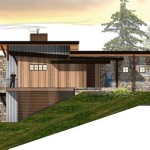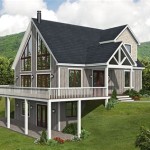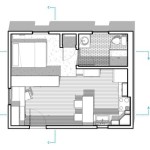2 Bedroom Basement Floor Plans
Designing a basement floor plan can be an exciting opportunity to add extra living space to your home. Whether you're looking to create a guest suite, a home office, or a recreation room, there are many factors to consider when creating a 2-bedroom basement floor plan.
Key Considerations for Basement Floor Plans
- Natural Light: Basement spaces often have limited natural light, so it's important to incorporate windows or light wells into your design.
- Ceiling Height: Basements typically have lower ceilings than upper floors, so it's important to account for this when planning the layout and choosing furniture.
- Ventilation: Basements can be prone to moisture and odors, so proper ventilation is crucial. Consider installing a ventilation system or incorporating natural ventilation sources.
- Egress: Basement bedrooms must have a safe and accessible egress window in case of emergency.
Layout Options for 2-Bedroom Basement Floor Plans
There are several layout options to consider for 2-bedroom basement floor plans:Side-by-Side Bedrooms
This option places the two bedrooms on opposite sides of the basement, offering privacy and separation. A shared bathroom can be located in the center of the floor plan.
L-Shaped Layout
An L-shaped layout allows for a more efficient use of space, especially in narrow or irregular-shaped basements. One bedroom can be placed at the end of the L while the other is positioned perpendicularly.
Single Corridor Layout
A single corridor layout features a central corridor with bedrooms located on either side. This design provides easy access to the bedrooms while maximizing space utilization.
Common Features of 2-Bedroom Basement Floor Plans
- Shared Bathroom: Basement floor plans typically include a single bathroom that is shared by both bedrooms.
- Laundry Room: If space allows, a laundry room can be incorporated into the basement floor plan, providing convenience and additional storage.
- Storage Areas: Basements often offer ample storage space, which can be utilized through built-in closets, shelves, or dedicated storage rooms.
- Multifunctional Space: In addition to bedrooms, a 2-bedroom basement floor plan can include other multifunctional spaces, such as a home office, recreation area, or guest room.
Tips for Designing a Basement Floor Plan
- Maximize Natural Light: Incorporate windows, light wells, or skylights to bring in natural light and create a more welcoming atmosphere.
- Optimize Space: Use space efficiently by opting for multi-functional furniture, built-in storage, and flexible layouts.
- Prioritize Ventilation: Install a ventilation system or incorporate natural ventilation sources to prevent moisture and odor buildup.
- Consider Ceiling Height: Choose furniture and fixtures that are proportionate to the basement's ceiling height to avoid creating a cramped feeling.
Creating a 2-bedroom basement floor plan requires careful planning and consideration of the unique characteristics of basement spaces. By incorporating natural light, optimizing space utilization, and addressing ventilation and egress requirements, you can transform your basement into a comfortable and functional living area.

2 Bedroom 1 Bathroom 900 Sq Ft Floor Plans Basement House Apartments For

Open Floor Plan Basement

Simple 2 Bedroom House Plan 21271dr Architectural Designs Plans

Hugedomains Com Basement House Plans Floor

The Brighton With Finished Two Bedroom Basement Suite Separate Entrance

Basement Floor Plans Types Examples Considerations Cedreo
Small 2 Bedroom Bungalow Plan Unfinished Basement 845 Sq Ft

2 6 Bedroom Craftsman House Plan 4 Baths With Basement Option 187 1147

Country Style House Pla 2804 Lakeview Basement Floor Plans Layout

Basement Open Floor Plan Idea








